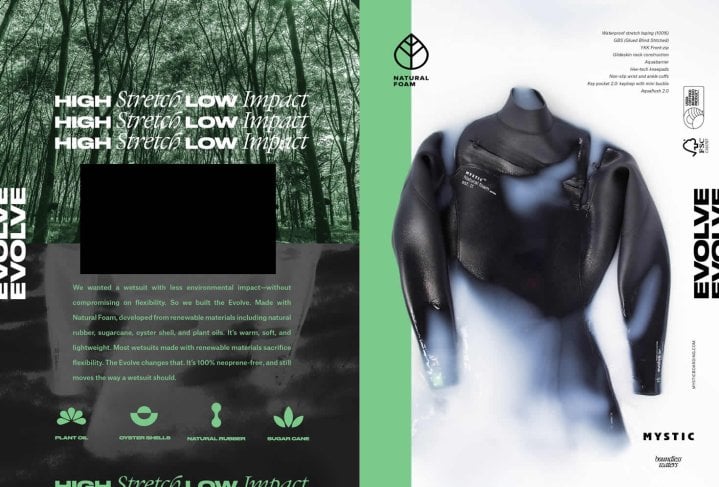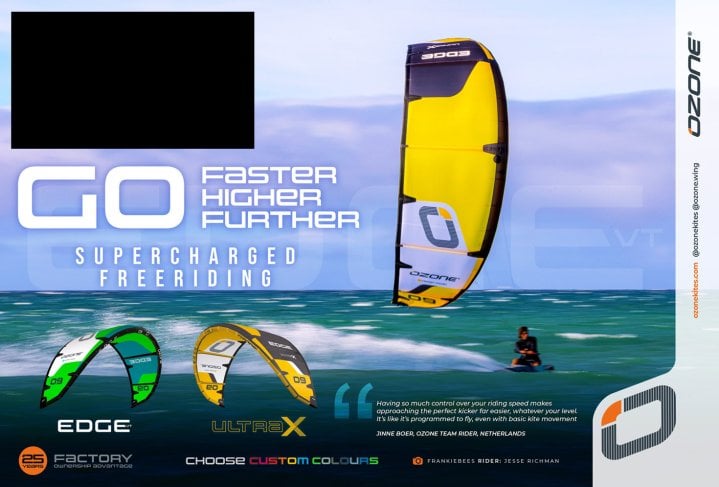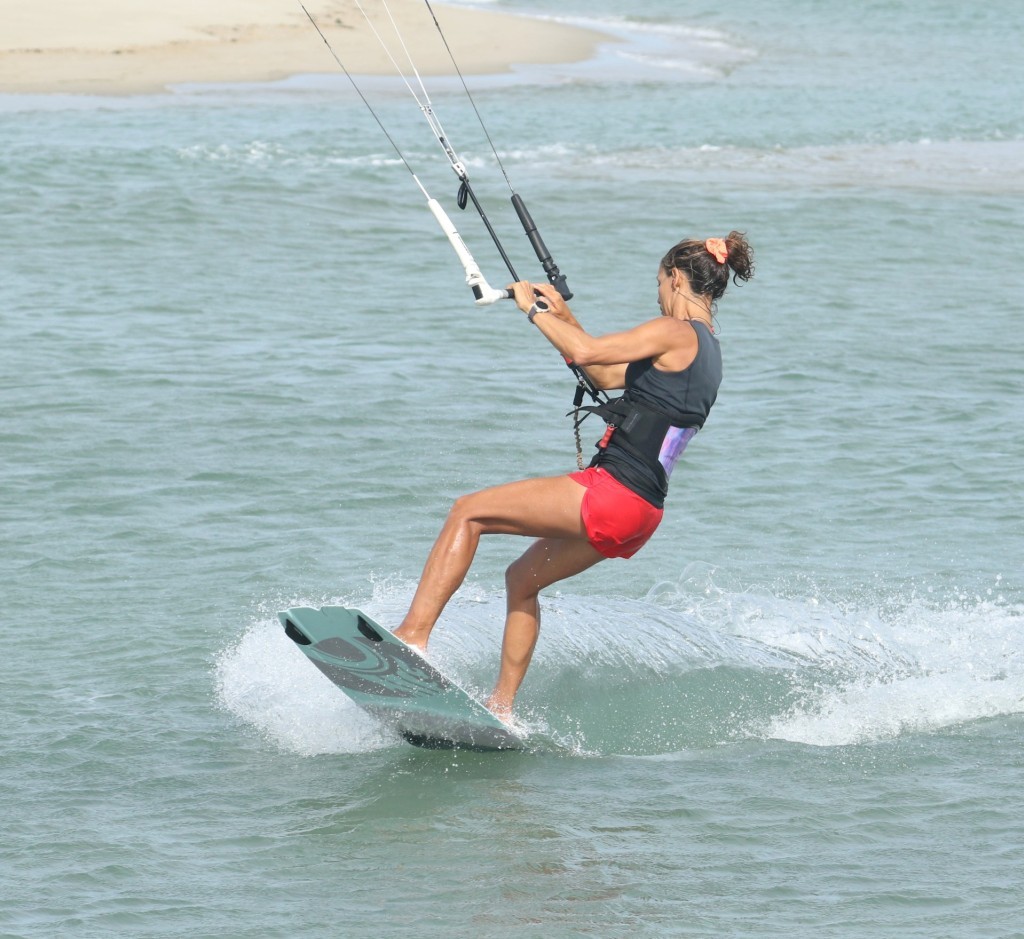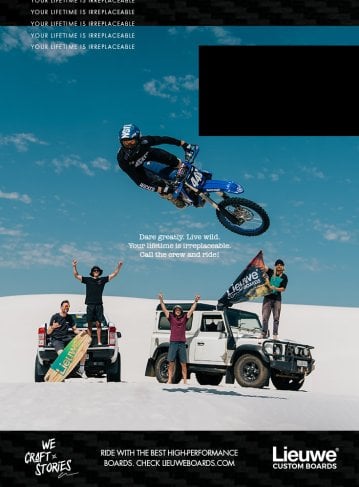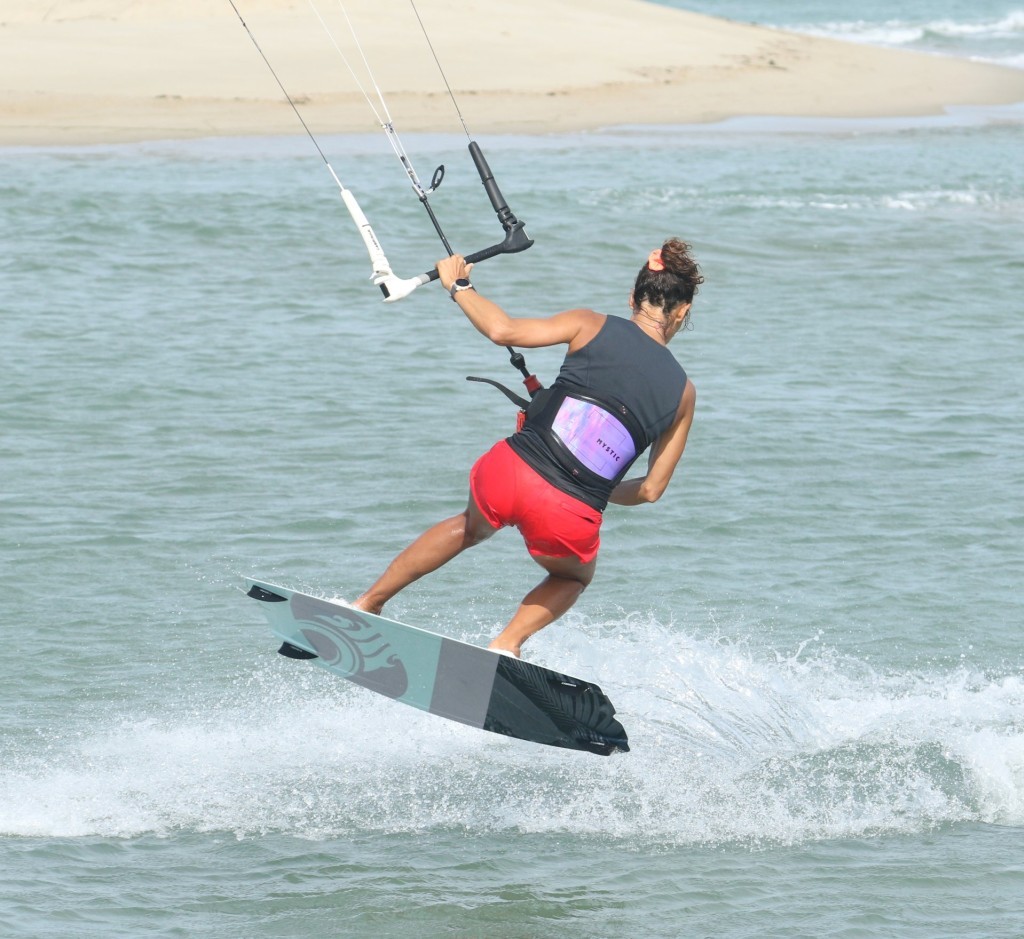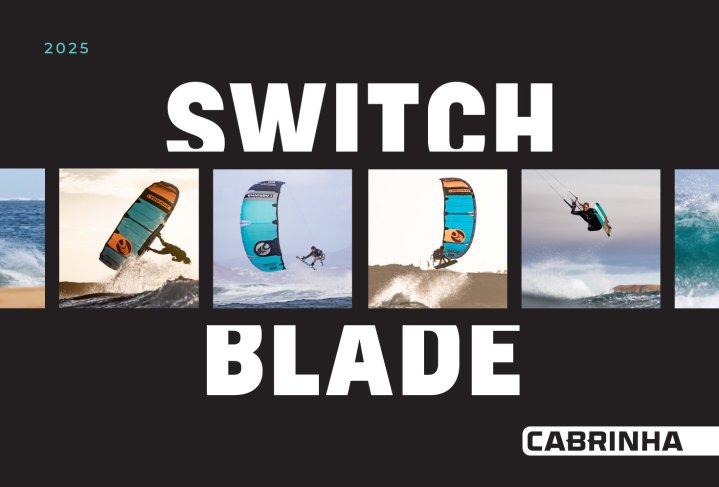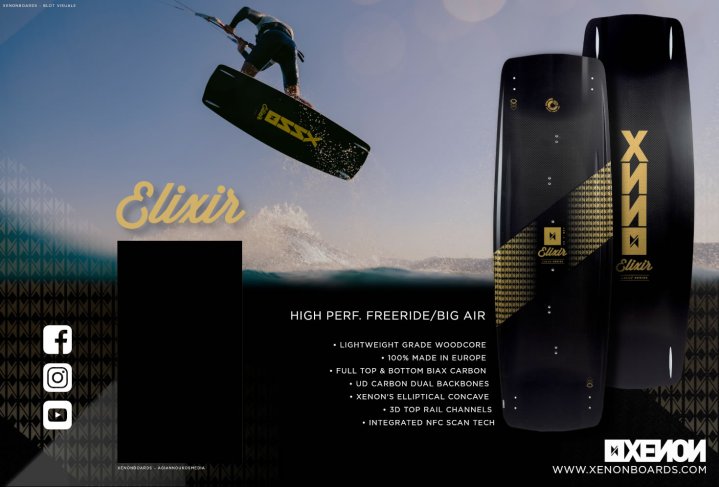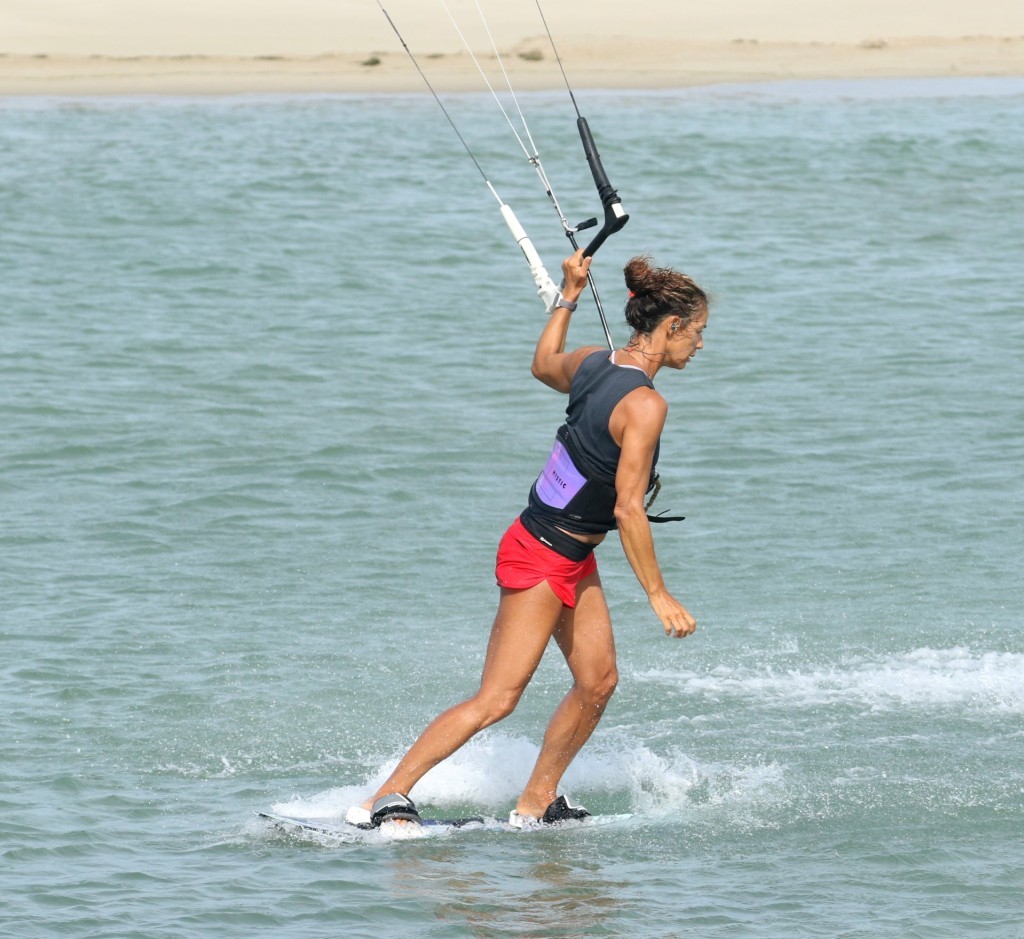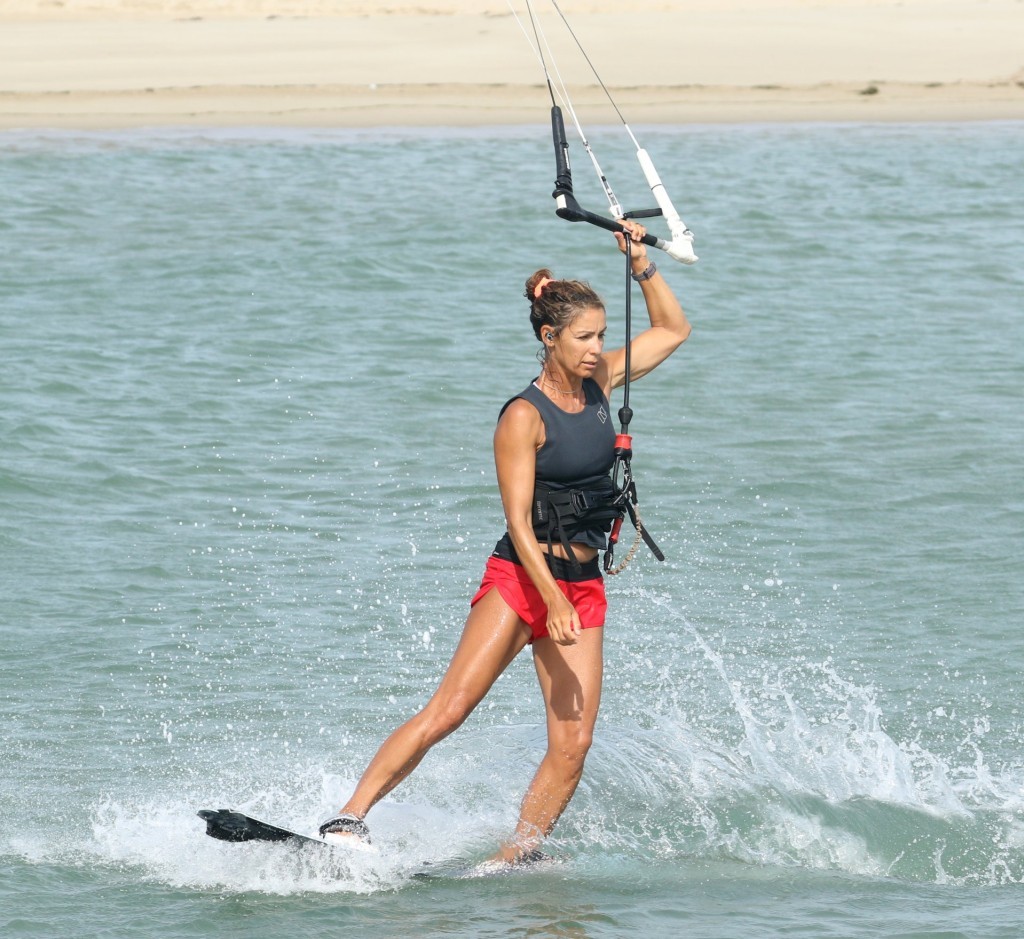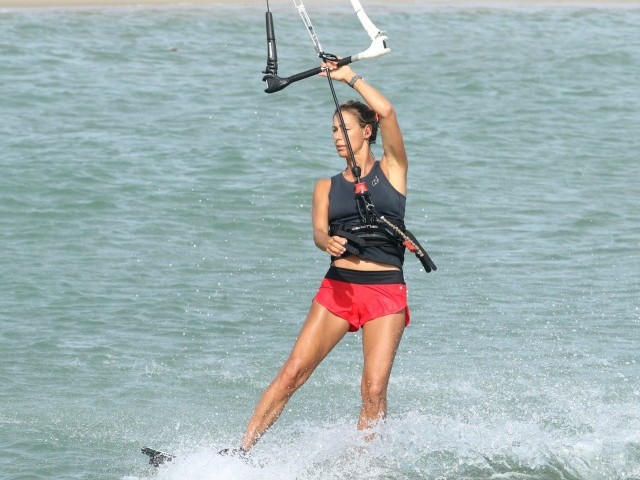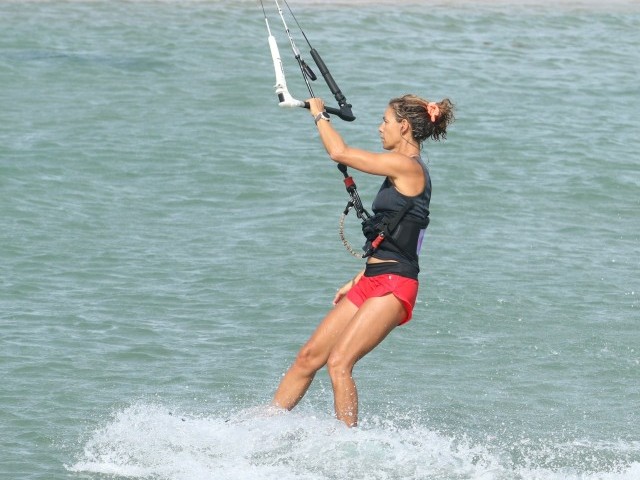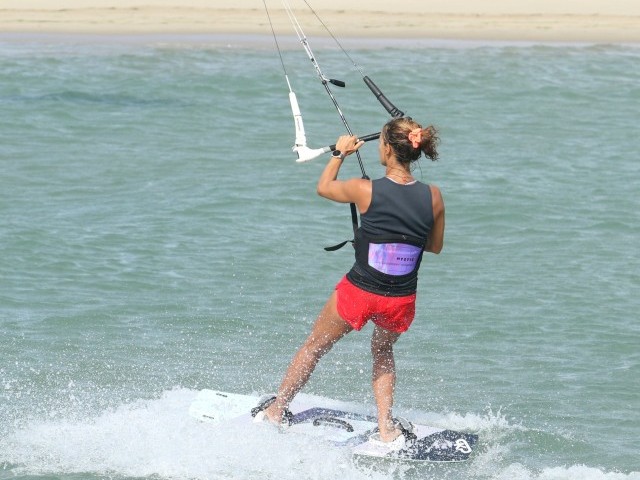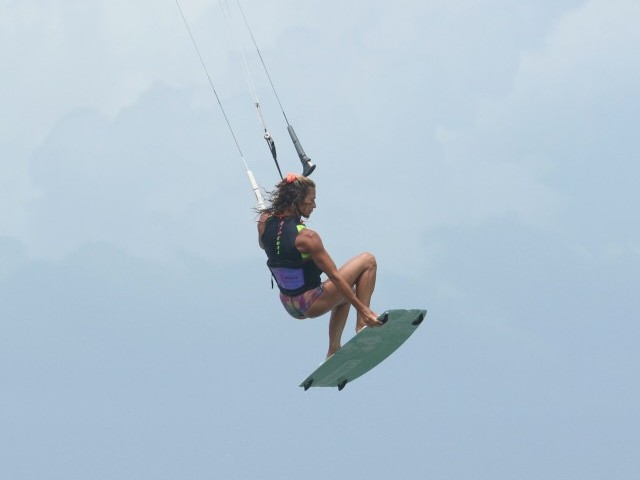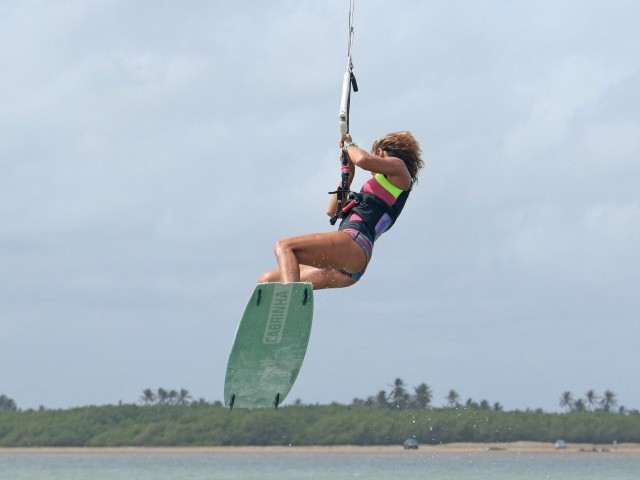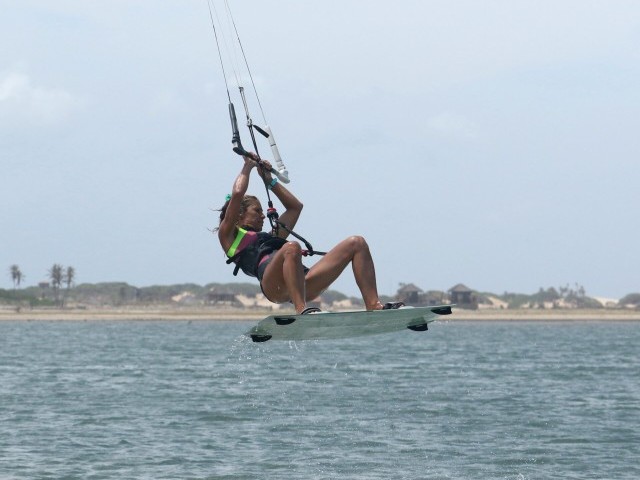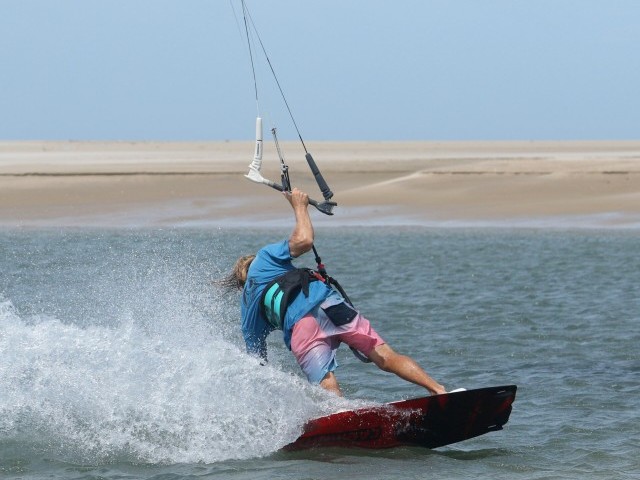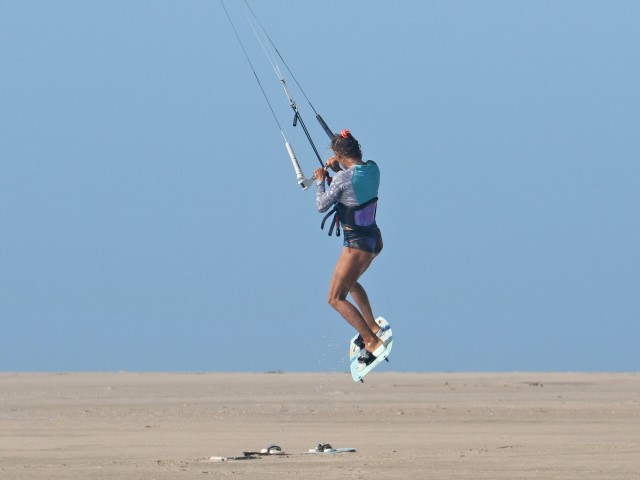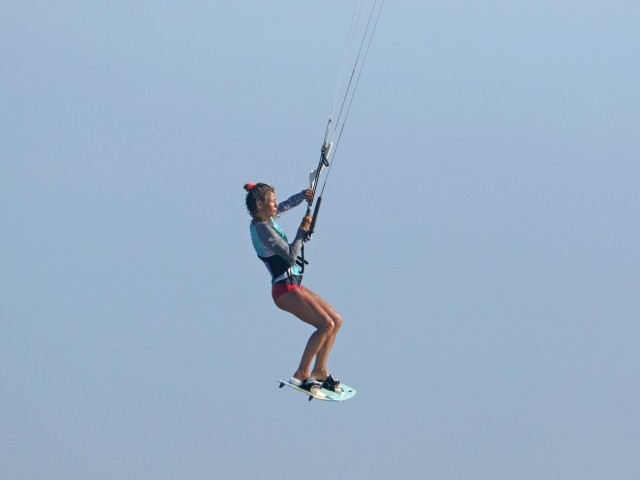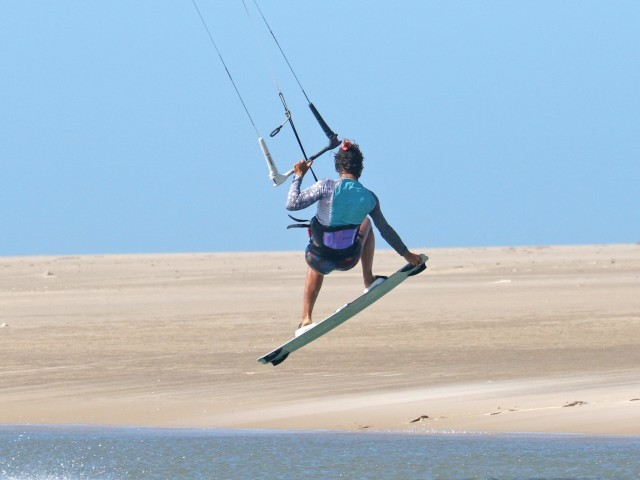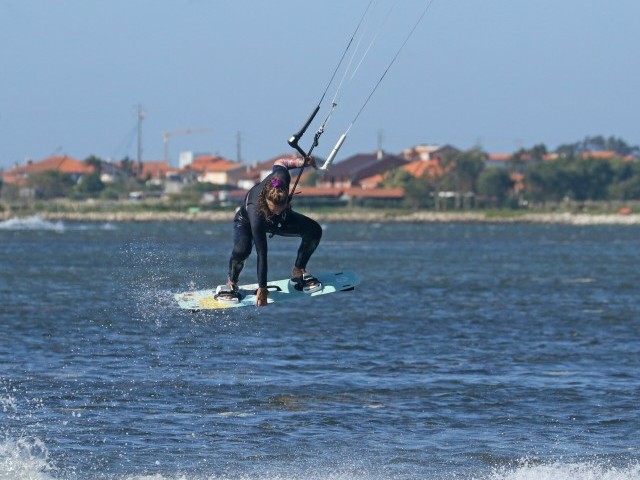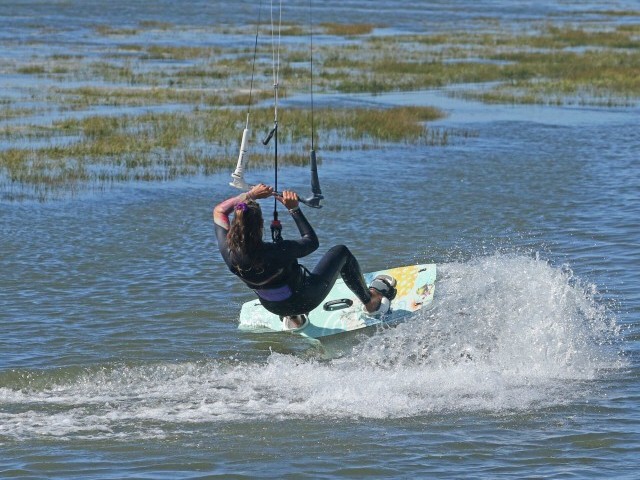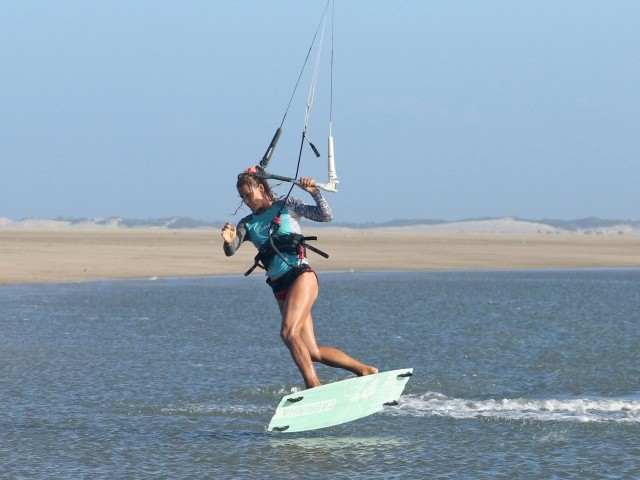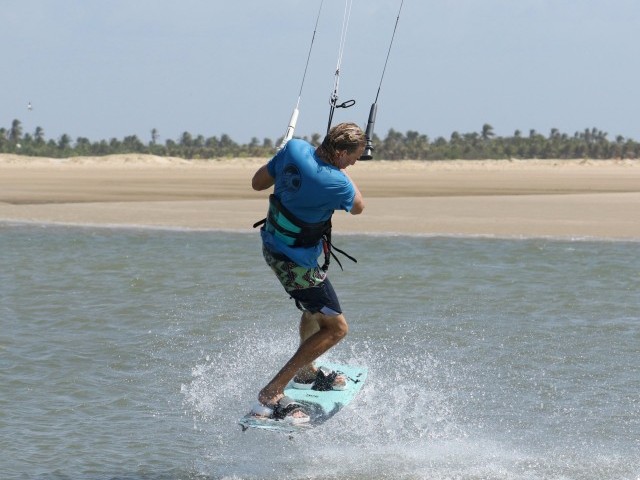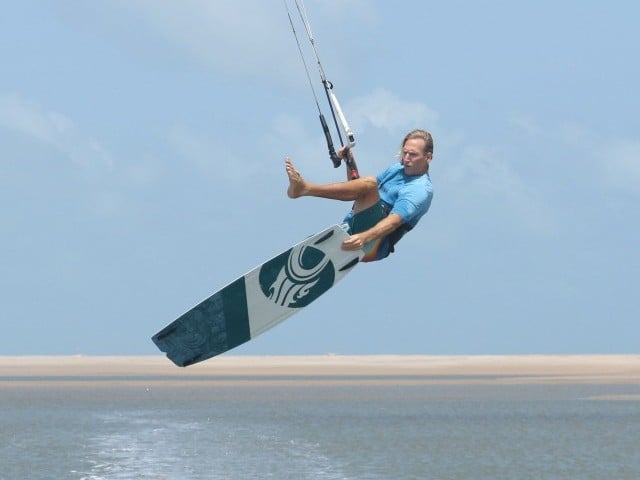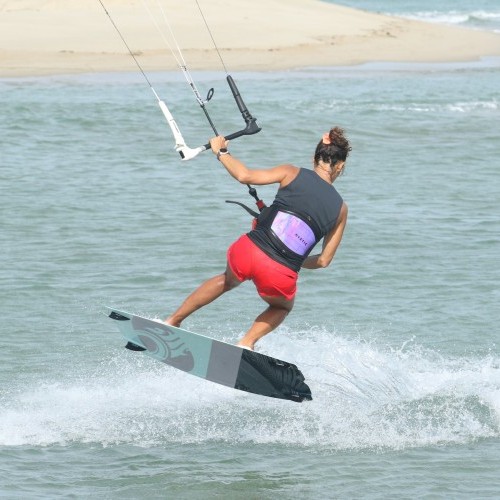
Pop to Blind with Ole
Technique / Intermediate
Introduction
The Pop to Blind with an Ole has been such a popular move, celebrated on our clinics for nigh on 15 years. Last month, we had some new takers from a much younger generation, and so the Ole lives on. It’s a really satisfying move that feels just oh so amazingly good. It’s simple yet sublime and opens the door to a plethora of new tricks as it teaches you to land blind over the board. Low level showing off has never felt this good. If you already have blind in your armoury it would be rude not to give this a go, and if you don’t, check out Riding Blind in IKSURFMAG Issue 77. All you need is some pop, patience and persistence.
So, what is an Ole? It’s the movement necessary to push the bar across from a blind position so that you are suddenly and magically riding toeside. It’s the hooked in version of a surface pass. However, as simple as pushing the bar sounds, there’s a fair bit going on in the background to get rid of all line tension, which then allows you to complete this with your nose intact. Without further ado, let’s have a look at what’s involved...
Pop Pic A.
Being a pop trick means that you won’t be sending the kite to get off the water. In this instance, it’s probably a very good thing as you’re not looking for height. You just want enough to get around to blind. However, in preparation for your Ole, you will want your kite relatively high, and definitely no lower than 11 or 1 o’clock. On your approach, make sure that your hands are centred on the bar. If you already have a blind, the main difference in your pop will be your approach. You need to rotate far enough around so that you land pointing ever so slightly off the wind. By this, we mean a bit further than across the wind. This will be considerably more achievable if you don’t come in edging hard, so approach on a very gentle edge across the wind. From here, you’ll be able to carve and stamp to get off the water without having to turn up hard into the wind. As with everything pop, be sure to stamp before pulling on the bar, otherwise you’ll be pulled across your board. Here you can see that as Karine pops she has her kite quite high and is already anticipating her blind by turning her head back towards the tail of her board, whilst her bar remains on the sweet spot.
The 180 Pic B.
Assuming that you’re already the owner of a well-honed blind, we won’t hark on too much. However, as you lift your back foot up towards your bum and turn your shoulders, hips and board in unison, you must push your bar away. You don’t want the kite pulling you downwind. Pushing the bar away will also prevent you from steering the kite down as you turn. Make sure that you separate your up and your around. This way, you’ll be able to bring the board with you. If you go straight for your 180, you’ll leave the board behind and find it hard to rotate enough. Karine has lifted her back foot up in towards her bottom and you can see how everything is rotating together, whilst she keeps her bar out.
Touch Down Pic C.
This is what you're aiming for, landing upright over the board, but blind. When aiming for an Ole, it’s too tempting to try and rotate everything as far as possible. Imagine if Karine had just landed but she was facing the camera. Alas, this won’t work. Blind means that your head, shoulders, hips and knees are pointing back towards where you came from. In this position, you’ll be balanced and in control. Most importantly, your weight is biased towards the new tail, which keeps the nose up and enables you to control the board – more on this in a second. In the photo, Karine has landed over the board, and she’s passed cross wind. She’s standing tall, her weight is on the tail, kite high and her bar is out so the power is off. She’s perfectly poised to Ole.
Tension Dump Pic D.
Now, before getting overly excited and pushing your depower main line across your face with the tension of a guitar string, you need to dump all tension. The first and most obvious port of call is to push your bar up as far as possible, quite literally depowering your kite completely. The second is to turn your board downwind. With your weight already on your new back foot, you can drop your weight onto your heels and the board will carve off its rocker towards the kite, releasing even more tension. You can clearly see how Karine’s weight is on her back foot, so she’s on the turny tail. Her back leg is flexed, dropping her weight onto her heels, whilst she pushes the bar out as far as physically possible. All tension has been well and truly dumped.
Ole Pic E.
It’s the moment you’ve been waiting for. With no tension in the lines, you can now Ole, and believe us, it helps if you say it out loud too: “Ole!” Turn your head and shoulders so that you’re looking forward and bring the bar across upwind and in front of your face. Push your hand upwind as you bring the bar through. Looking at Karine, she’s turned her head, pushed the bar upwind and across and her board is carving downwind, so there’s no threat of any tension returning just yet.
End Game Pic F.
This is where you should be ending up, toeside in the same direction. The board is heading the same way, the kite is in the same position, only you and the bar have moved from facing back to facing forward, just like that! You now have two choices, either carve back onto your toes or carry on toeside.
Or Pic G.
As this may not be your preferred toeside, you can keep weight on your heels and slide the board back to heelside. You’ll find this quite natural at first and will probably end up heelside without even thinking about it.
Top Tips
You have time. The sequence is important, it’s two moves. Firstly, landing blind and then Ole-ing out.
Flat water is most definitely your friend. Much like blind, you’ll be using momentum, and chop eats momentum for breakfast. With flat water, you’ll have more glide from blind and therefore more time to Ole.
If you think about only one thing, it’s getting yourself far enough around so you’re not landing on an edge. Remember, don’t start from too much of an edge and keep your head and shoulders upright on landing.
Now, check out the sequence for a step by step visual and then the video for a real time experience.
Common Problems
Landing on an edge. If you’re used to blind , this is your default, so it’ll take some concentration to override your muscle memory. Approaching with no edge and keeping your body upright will help.
Stuffing the nose in as you land. This is the classic and most common problem. It’s a result of trying to rotate all the way around straight into your Ole. If you throw your upper body around, your weight will move forwards, et voila, you’ll bury your nose. Land blind, dump tension and, only then, Ole.
If you’re landing over the board but catch your heelside edge and fall downwind of the board. This means that you haven’t depowered the kite enough post pop. Make sure you push the bar out, and if that’s not helping, try trimming a bit. Being overpowered will not make life easy.
Keystones
- Relaxed edge approach
- Pop then rotate
- Land over the board and upright
- Bar out and carve down wind
- Ole, and say it like you mean it!
This technique article was in Issue 96 of IKSURFMAG.
Related
By Christian and Karine
Christian and Karine have been working together as a coaching team, running improver to advanced kitesurfing clinics since 2003.



